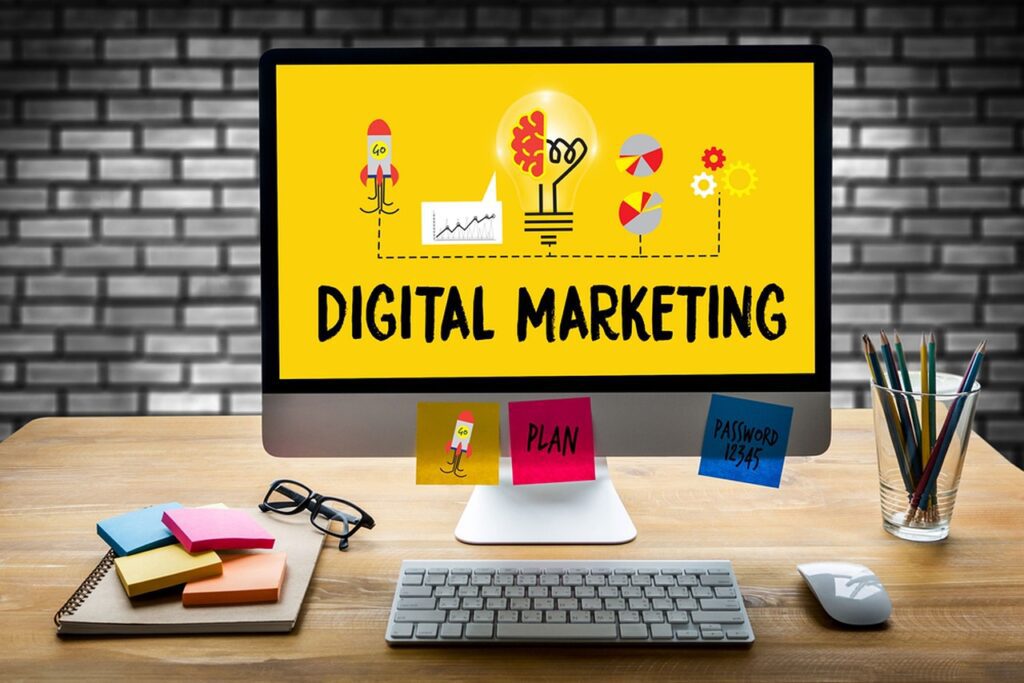Emotional design embodies the essence of creating user experiences that evoke emotions and meaningful reactions. At a time when technology shapes our daily interactions, the importance of emotionally-infused web design is more crucial than ever. This guide takes you to the heart of emotional designWe offer you the keys to enriching your digital interfaces with experiences that resonate emotionally with users, boosting engagement and loyalty.
The components of Emotional Design
Emotional design is based on three essential components: visibility, interaction and emotional engagement. Each plays a key role in creating a memorable and satisfying user experience.
Visibility
It's all about the visual aspect of your website. It's not just about choosing the right colors or images, but assembling them in a way that conveys specific emotions. Visuals must be in harmony with the brand message and the desired emotional response.
Interaction
Interaction with the website must be fluid and intuitive. Every interaction, whether it's as small as a mouse-over or as engaging as a click, must reinforce the emotional bond with the user. This means designing user interfaces that are not only functional, but also pleasant and engaging.
Emotional Engagement
Emotional engagement is the heart of emotional design. It's about creating a deep connection between the user and the website. This can be achieved through storytelling, personalized micro-interactions, or gamification. The aim is to provoke an emotional reaction that encourages the user to return and interact with your brand.
Each component of emotional design plays a crucial role in creating a user experience that goes beyond mere utility to touch users' hearts. By incorporating these principles, you can transform your website into a digital space where every visitor feels a strong emotional connection, reinforcing your brand's image.
Understanding Emotional Design
To fully grasp the essence of emotional design, it's crucial to understand how and why certain experiences elicit emotional reactions in users. Emotional reactions are often the result of a deeply personal interaction with content, dictated by lived experiences, cultural values and individual preferences.
The Psychology of Colors
Color is a powerful element that can influence mood and emotions. Each color has the ability to evoke specific reactions; blue can evoke tranquility, while red can stimulate energy. Understanding the psychology of color is essential to using nuances in a way that enhances users' emotional engagement.
Typography and shapes
Just like colors, typography and shapes play a significant role in conveying feelings and emotions. An elegant, modern font can communicate sophistication, while a soft, rounded typeface can evoke a feeling of friendliness and comfort. The shapes used in the design, whether geometric or flowing, can also contribute to the overall ambience of the site.
Narration and micro-interactions
The ability to tell a story through the website engages users on a deeper level. Combined with meaningful micro-interactions, storytelling can transform a standard browsing experience into a memorable adventure. Stories captivate, educate and move, creating a lasting bond between user and brand.
Incorporating emotional design into a website is no easy task, but the rewards in terms of user satisfaction and customer loyalty can be considerable. By investing time and energy in understanding the principles of emotional design, designers can create web experiences that not only grab users' attention, but also capture their hearts.
Benefits for contractors
Incorporating the principles of emotional design into web design strategies offers entrepreneurs a significant competitive advantage. By leveraging emotions to enhance user engagement, companies can significantly improve conversion rates, build customer loyalty and accentuate brand value. Here are some key benefits:
Increase User Engagement
A web design that evokes positive emotions is more likely to captivate users and encourage them to interact with the content. This translates into longer session times, lower bounce rates and, ultimately, higher conversions.
Customer loyalty
Users who feel an emotional connection with a brand are more likely to become loyal customers. By cultivating web experiences that resonate emotionally with visitors, companies can foster long-term loyalty.
Brand differentiation
In a saturated market, standing out from the competition is crucial. By using emotional design to deliver unique, memorable experiences, entrepreneurs can reinforce their brand identity and stand out from the crowd.
Positive feedback and word-of-mouth
Outstanding web experiences are often shared between users, generating positive word-of-mouth. Personal recommendations, fueled by powerful emotional experiences, can significantly extend a brand's reach.
In short, adopting emotional design in web design is a wise strategy for companies seeking to optimize their online presence. Not only does it enhance the user experience, it also helps build a lasting and meaningful relationship between brands and their customers.
Implications for DesignersImplications for Designers
For designers, incorporating emotional design into web projects requires a deep understanding of the end-user's needs and desires. This requires both an analytical and creative approach to identifying the emotions one wishes to evoke, and the means by which these emotions can be effectively aroused through design.
Understanding the audience
Understanding the audience is paramount for designers wishing to apply the principles of emotional design effectively. This involves an in-depth study of users, identifying not only their functional needs but also their deep emotional motivations. This approach enables us to create designs that truly resonate with the audience, thus eliciting positive emotional reactions.
Audience segmentation
Segmenting the audience is essential to refining the emotional design approach. Segmentation enables designers to create more precise customizations based on different user groups. By understanding the variations in preferences and behaviors between these segments, designers can more effectively target their efforts to evoke specific emotions.
User Behavior Analysis
Analyzing user behavior on the website offers valuable insights into what sparks their interest, what engages them, and, ultimately, what triggers their emotional response. Using web analytics tools to track user journeys, click-through rates, and conversion rates can reveal interesting patterns. This behavioral data is crucial for fine-tuning and refining emotional design strategies.
User testing and feedback
User testing and feedback gathering are essential steps in the emotional design process. These methods help validate the effectiveness of design choices in terms of emotional evocation. Direct feedback from users helps to understand whether the designer's emotional intentions are perceived and appreciated by the target audience.
Approaching web design with an emotion-centered perspective requires careful thought and a rigorous methodology. Understanding the audience is the first step towards creating captivating web experiences that engage users on an emotional level, increasing overall site effectiveness in terms of user satisfaction and business results.
Creating an emotional palette
Creating an emotional palette is an essential step in applying the principles of emotional design. This approach enables designers to deliberately choose the colors, shapes, images and even animations that will harmoniously evoke the desired emotions in users.
Experimentation and iteration
The emotional design process is iterative. It constantly involves testing with users to assess the emotional reactions elicited by the design. This enables designers to refine their approach and ensure that the final design truly speaks to the hearts of users.
By taking these aspects into account, designers can maximize the emotional impact of their creations, transforming website navigation into a deeply personalized and memorable experience for the user.
Using the principles of emotional design in the creation of your website is no longer an option, but an imperative for those aspiring to captivate and win the hearts of their audience. By rethinking our approach to design, we invite user experiences that go beyond the digital, touching directly on the human essence. This innovative perspective promises not only to leave a lasting impression, but also to initiate an authentic and lasting connection with your site's visitors.










